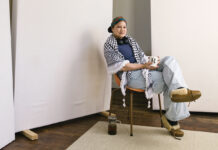In the ’90s, if you asked most women business owners what their dreams were, they’d say they just want to be able to support themselves and their families. The times have changed: Today, women have bigger dreams and seek to grow their businesses to the maximum level. However, many are still saddled with an outdated perception about their roles in business and contributions to the economy, despite tremendous growth over the past decade.
The old perception is that women-led and -owned businesses are micro-enterprises; companies run out of the home with fewer than five employees. But most women outgrew the “cookies and crafts” niche a long time ago, and have their sights set on bigger goals. Some have even found success in “nontraditional” industries – like tech, mining or construction.
Progressive thinking is being pushed forward by new data that showcases the undeniable impact of women-led and -owned businesses on the economy. American Express OPEN’s latest Growing Under the Radar report details just how strong these businesses have been over the past decade. Perhaps the most surprising data is that women-led and -owned businesses experienced 57 percent growth in revenue of $10 million or above.
The Women Presidents’ Organization (WPO), a nonprofit peer-advisory group for women, is actively working to quell the misconception as well. The WPO membership itself accounts for more than 130,000 jobs, stemming directly from its 1,600-plus female business leaders.
The WPO’s mission is to empower women in business, not just in the U.S., but also around the world. The organization has chapters abroad in Lima, Istanbul, Cape Town, throughout Canada and a recently opened chapter in Mexico City. There are plans to launch chapters in MENA and Johannesburg later this year as well. As perceptions change in these growing markets, women leaders are becoming more and more influential and pooling their resources to help each other succeed.
As female entrepreneurship gains steam, interest from venture capitalists will grow as well: There are now a number of investment groups, like Golden Seeds, that specialize in funding and empowering women-owned businesses.
Nicole Milici, owner of Spada Media in Providence and member of the WPO’s Providence chapter, attributes the success of women-led and -owned businesses to a different management approach than that of most men.
“I feel that there are different ways that women lead. I’ve experienced it through my own business, and from learning from the women who are my peers in the WPO,” said Milici. “Women are less concerned with hierarchy – for example, we might be less hung up on job titles. I see that many of the businesses in our WPO chapter have a different structure than their male counterparts.”
The influence of male businesses notwithstanding, Milici and her peers in Rhode Island suggest that their leadership styles make their businesses more resilient. Peer advisory is a common theme among elite women-led firms, as group thinking and pooled insight can help businesses take the next steps toward significant growth. According to Vistage, companies that use peer advisory actually see a 6 percent increase in annual revenue.
“When I first started, I wanted to mimic the men; I was trying to be one of the guys,” Milici said. “Then we just started doing things our own way and it worked out better for us. I realized the qualities that I had were what made me stronger and made the business stronger. I think we need to celebrate our femininity and doing things differently. It’s not wrong.”
Today, they are now heavy in nontraditional industries. The greatest number of multimillion-dollar women-owned businesses are in wholesale trade (20 percent), finance/insurance (12 percent) and transportation/warehousing (11 percent).
In the WPO, the largest number of businesses are in manufacturing and distribution. American Express OPEN indicates that health care, social assistance and education are industries in which the growth of women’s ownership has been the strongest.
It’s plausible to think that “dreaming the big dream” is a major part of why so many women-led and -owned businesses have reached such lofty benchmarks in the last decade. Thankfully, the stereotype is wearing thin, as more women are ascending the entrepreneurial ladder and building their own businesses from the ground up, bringing more visibility to the success of women in business as a whole.
“We’ve changed in the past 20 years, especially with how women in the workforce are perceived,” said Milici. “I remember my dad telling me, ‘If you just want to be a mom, that will be OK.’ Today, my husband and I see no difference between what our son and daughter can accomplish. And they would never consider a difference either.” •
Marsha Firestone is the founder and president of the Women Presidents’ Organization.












